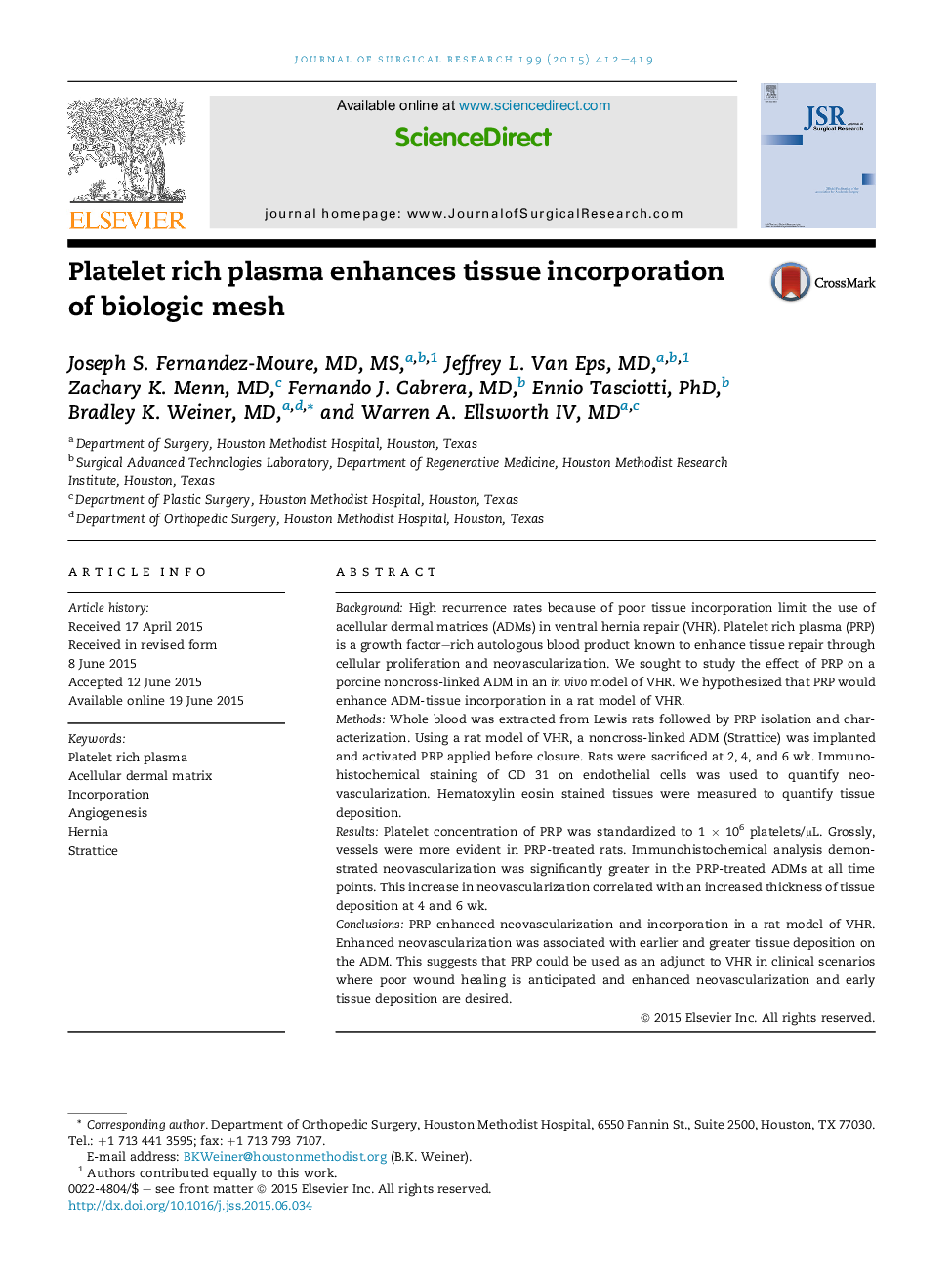| Article ID | Journal | Published Year | Pages | File Type |
|---|---|---|---|---|
| 6253504 | Journal of Surgical Research | 2015 | 8 Pages |
BackgroundHigh recurrence rates because of poor tissue incorporation limit the use of acellular dermal matrices (ADMs) in ventral hernia repair (VHR). Platelet rich plasma (PRP) is a growth factor-rich autologous blood product known to enhance tissue repair through cellular proliferation and neovascularization. We sought to study the effect of PRP on a porcine noncross-linked ADM in an in vivo model of VHR. We hypothesized that PRP would enhance ADM-tissue incorporation in a rat model of VHR.MethodsWhole blood was extracted from Lewis rats followed by PRP isolation and characterization. Using a rat model of VHR, a noncross-linked ADM (Strattice) was implanted and activated PRP applied before closure. Rats were sacrificed at 2, 4, and 6 wk. Immunohistochemical staining of CD 31 on endothelial cells was used to quantify neovascularization. Hematoxylin eosin stained tissues were measured to quantify tissue deposition.ResultsPlatelet concentration of PRP was standardized to 1 Ã 106 platelets/μL. Grossly, vessels were more evident in PRP-treated rats. Immunohistochemical analysis demonstrated neovascularization was significantly greater in the PRP-treated ADMs at all time points. This increase in neovascularization correlated with an increased thickness of tissue deposition at 4 and 6 wk.ConclusionsPRP enhanced neovascularization and incorporation in a rat model of VHR. Enhanced neovascularization was associated with earlier and greater tissue deposition on the ADM. This suggests that PRP could be used as an adjunct to VHR in clinical scenarios where poor wound healing is anticipated and enhanced neovascularization and early tissue deposition are desired.
